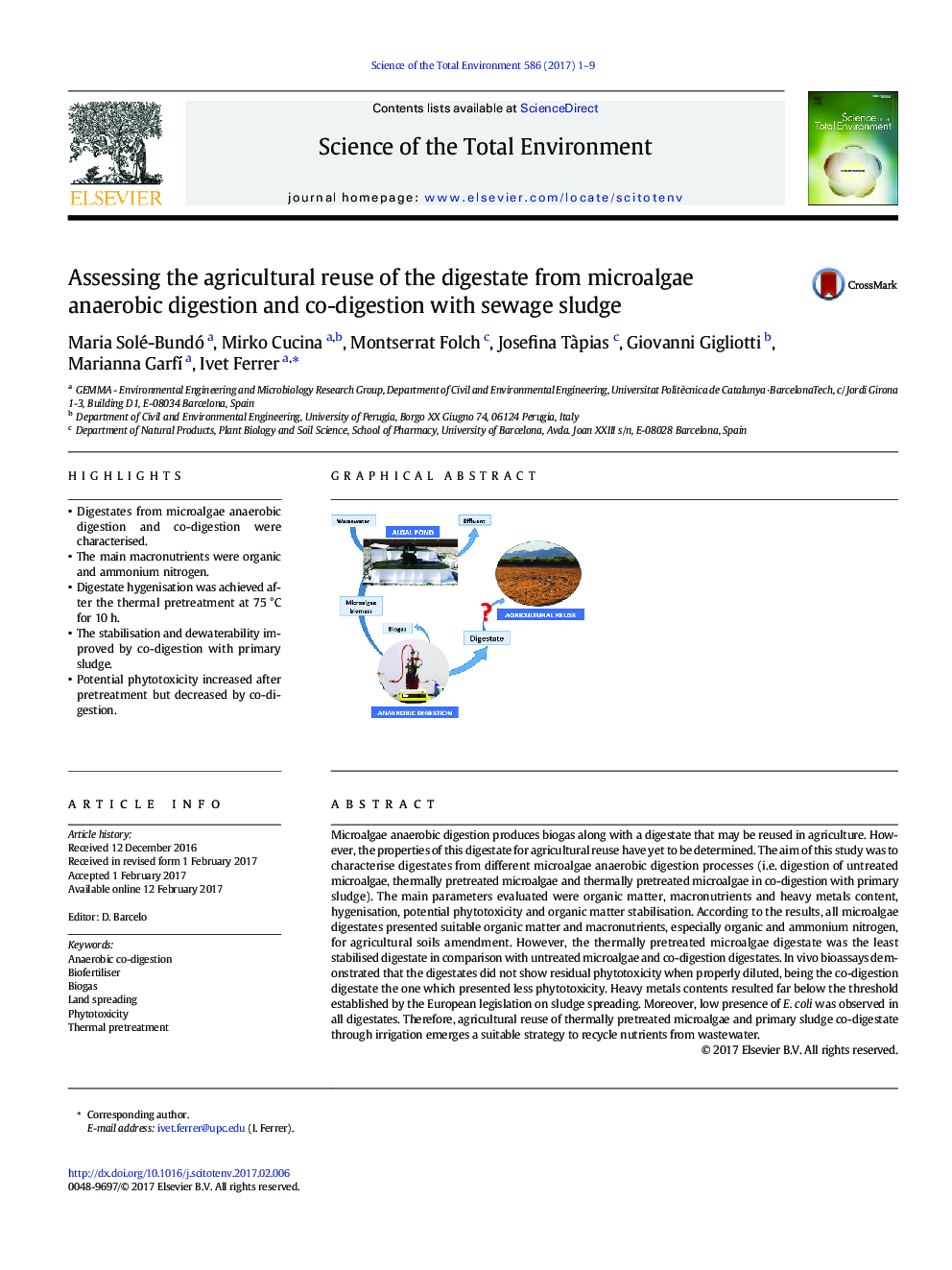| کد مقاله | کد نشریه | سال انتشار | مقاله انگلیسی | نسخه تمام متن |
|---|---|---|---|---|
| 5751098 | 1619707 | 2017 | 9 صفحه PDF | دانلود رایگان |
- Digestates from microalgae anaerobic digestion and co-digestion were characterised.
- The main macronutrients were organic and ammonium nitrogen.
- Digestate hygenisation was achieved after the thermal pretreatment at 75 °C for 10 h.
- The stabilisation and dewaterability improved by co-digestion with primary sludge.
- Potential phytotoxicity increased after pretreatment but decreased by co-digestion.
Microalgae anaerobic digestion produces biogas along with a digestate that may be reused in agriculture. However, the properties of this digestate for agricultural reuse have yet to be determined. The aim of this study was to characterise digestates from different microalgae anaerobic digestion processes (i.e. digestion of untreated microalgae, thermally pretreated microalgae and thermally pretreated microalgae in co-digestion with primary sludge). The main parameters evaluated were organic matter, macronutrients and heavy metals content, hygenisation, potential phytotoxicity and organic matter stabilisation. According to the results, all microalgae digestates presented suitable organic matter and macronutrients, especially organic and ammonium nitrogen, for agricultural soils amendment. However, the thermally pretreated microalgae digestate was the least stabilised digestate in comparison with untreated microalgae and co-digestion digestates. In vivo bioassays demonstrated that the digestates did not show residual phytotoxicity when properly diluted, being the co-digestion digestate the one which presented less phytotoxicity. Heavy metals contents resulted far below the threshold established by the European legislation on sludge spreading. Moreover, low presence of E. coli was observed in all digestates. Therefore, agricultural reuse of thermally pretreated microalgae and primary sludge co-digestate through irrigation emerges a suitable strategy to recycle nutrients from wastewater.
81
Journal: Science of The Total Environment - Volume 586, 15 May 2017, Pages 1-9
